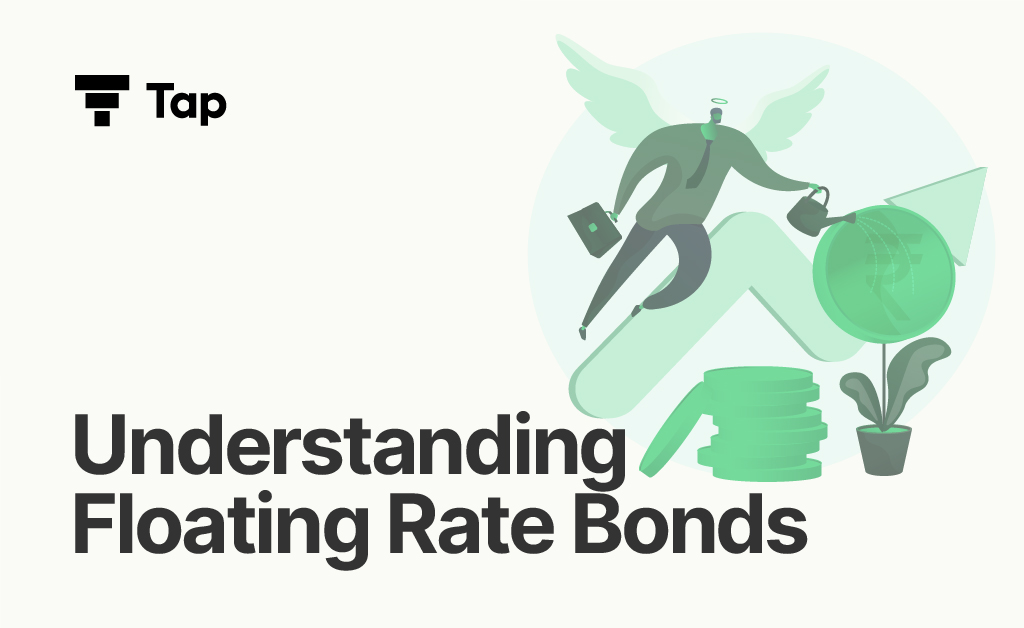RBI Floating Rate Bond in India

Investors seek instruments that adapt to market dynamics in the ever-evolving finance landscape. Enter Floating Rate Bonds, a flexible option designed to weather the storm of changing interest rates. In this comprehensive guide, we’ll explore the ins and outs of Floating Rate Bonds, uncovering their features, risks, and the potential advantages they bring to savvy investors.
Understanding Floating Rate Bonds:
What Are Floating Rate Bonds?
Floating Rate Bonds, a dynamic alternative to fixed-rate bonds, boast variable interest rates linked to benchmarks like LIBOR or the prime rate. This adaptability shields investors from inflation and interest rate fluctuations.
How Do Floating Rate Bonds Work?
The interest rate of floating rate bonds adjusts periodically and is tied to a benchmark. This flexibility positions investors for higher returns, especially in environments of rising interest rates.
Advantages and Disadvantages:
Advantages:
1. Lower Volatility: Prices are less susceptible to market changes than fixed-rate bonds.
2. High Returns: Potential for increased returns, particularly in rising interest rate scenarios.
3. Safety: Often issued by government bodies, mitigating default risk.
4. Diversification: Balances portfolio risk, especially in inverse market conditions.
Disadvantages:
1. Lower Yield: May offer lower yields than fixed-rate bonds, especially in falling interest rate environments.
2. Interest Rate Risk: Potential lag in adjusting to market rate changes.
3. Credit Risk: While lower, investors should monitor the creditworthiness of issuers.
Rising and Falling Interest Rates:
Effect of Rising Interest Rates:
Floating Rate Bonds yield higher returns as they adjust with rising benchmark rates, providing a hedge against inflation and increased borrowing costs.
Effect of Falling Interest Rates:
Yields may decrease if the benchmark rate falls, potentially lagging behind fixed-rate bonds. Investors should consider the market environment when making investment decisions.
Common Questions About Floating Rate Bonds:
Who Invests in Floating Rate Bonds?
Appealing to investors seeking protection against rising interest rates, they attract pension funds, asset managers, and income-focused investors.
How Do I Compare Different Floating Rate Bonds?
Consider credit rating spread over the benchmark rate, call features, liquidity, an the benchmark used.
Where Can I Buy RBI Floating Rate Bonds?
Traded on the secondary market through brokers and financial institutions, with some mutual funds and ETFs offering exposure.
Tax Implications:
The interest income earned from floating-rate bonds is generally treated as taxable income.
It is added to your total income and is typically taxable as ordinary income. Unlike certain tax-saving instruments, Floating Rate Bonds usually don’t offer specific deductions. Indexation adjusts the asset’s purchase price for inflation, potentially reducing the taxable capital gains. Consult with a tax advisor for specific details.
The Government of India has introduced a Floating Rate Bond (FRB) maturing in 2034, with the Reserve Bank of India (RBI) announcing an 8% interest rate for the Floating Rate Savings Bond (FRSB) 2034. This bond offers a variable interest rate that resets every six months, reflecting market conditions.
Interest Rate For RBI Floating Rate Bond:
The interest rate for the FRB is determined by averaging the yields of recent auctions for short-term government debt, such as Treasury Bills. This rate adjusts every six months. For the period from April 30, 2024, to October 29, 2024, the interest rate stands at 8%.
The 8% interest rate is calculated from the average of interest rates from the previous three auctions of short-term government debt, supplemented by a fixed additional amount of 0.98%.
FRBs have a maturity period of seven years, requiring a minimum investment of Rs 1,000 and having no maximum limit.
Interest payments are made semi-annually on January 1 and July 1, with no provisions for cumulative interest payments.
Floating-rate bonds offer flexibility, adjusting their interest rates based on prevailing market conditions, making them suitable for conservative investors seeking stable returns.
Backed by the government of India, FRBs are considered one of the safest investment options.
While FRBs provide full capital protection, they lack inflation protection, potentially resulting in no real returns when inflation surpasses the interest rate.
These bonds are not listed or traded, and loans cannot be taken against them. Premature encashment is allowed with penalties for senior citizens after a minimum lock-in period, which varies from four to six years based on age brackets.
Impact on Portfolio:
Consider the volatility and risk profile when diversifying your portfolio. While they manage interest rate risk, their performance may vary in different market conditions.
Market Insights:
Issuance of floating rate bonds has grown over 50% between 2018 and 2023, driven by rising interest rate expectations and increased demand for income-generating assets.
Yield Comparison (As of February 5, 2024):
– The average yield of investment-grade US floating-rate bonds is around 4.5%.
– The average yield of investment-grade US fixed-rate bonds with similar maturities is around 4.2%.
In conclusion, Floating Rate Bonds offer a dynamic income generation approach with advantages and considerations. As with any investment, careful evaluation, market awareness, and professional advice are essential for making informed decisions in this ever-changing financial landscape.
